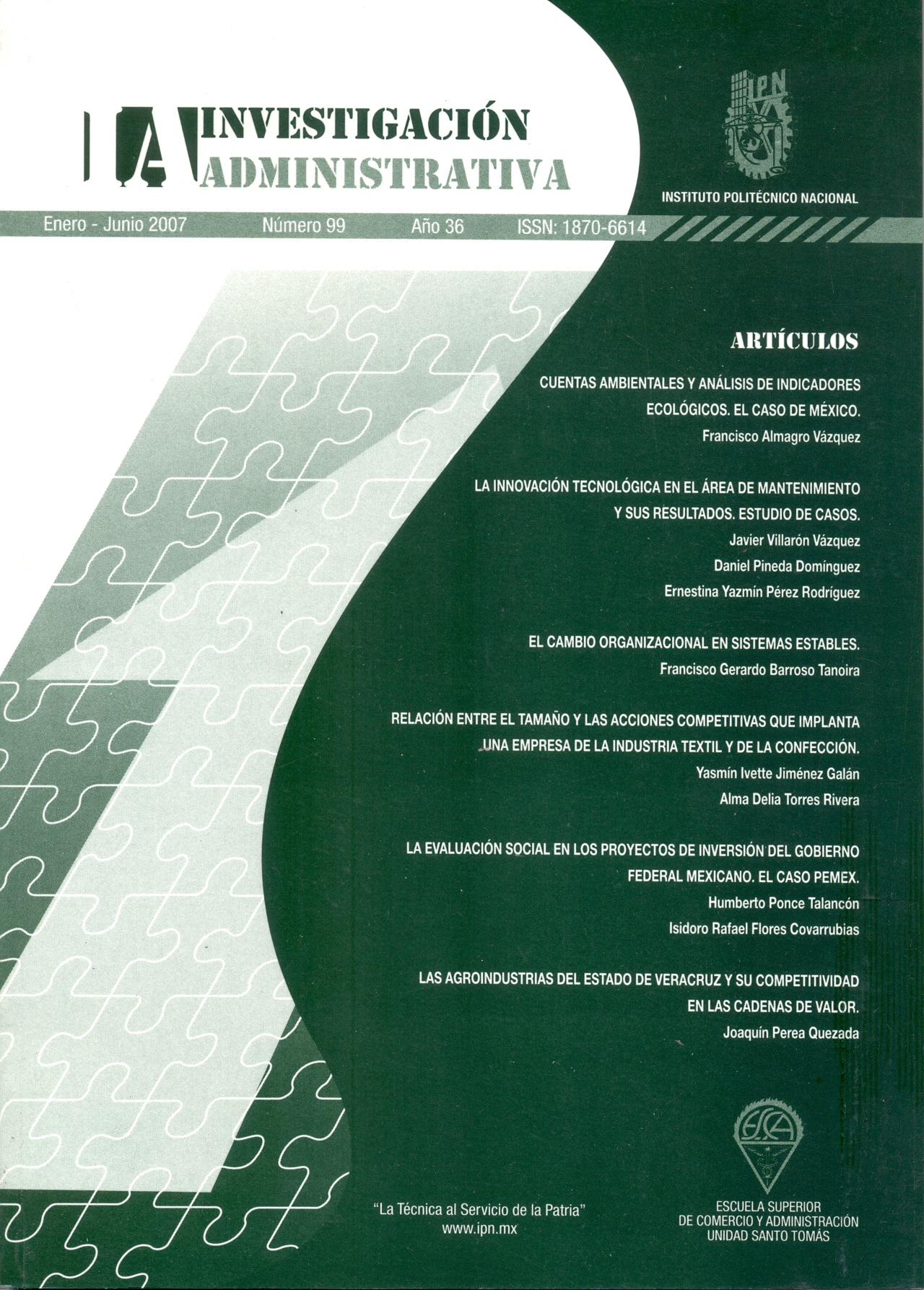TECHNOLOGICAL INNOVATION IN MAINTENANCE AND ITS RESULTS. CASE STUDY
Main Article Content
Abstract
The role played by the industrial maintenance, on the industrial development, during several decades has been based on the activities machinery of conservation of, equipment and buildings; the companies contemplate it like generator of expenses, a badly necessary one, and not like an area of strategic opportunity. In this work a "study of cases" appears that contemplates evidences in which test that the maintenance activities are highly creative, that are developed innovation and generate high-priority own technology for the Mexican companies. In the presented/displayed cases one is how the machinery has been modified and the productive processes so that they are more efficient, less time in the processes is consumed, is avoided extended strikes of machinery and equipment and exists less wastes, improving the results or effectiveness of the companies. Thus, one concludes that the maintenance area collaborates so that the companies are more effective and competitive in their respective markets.
Article Details

This work is licensed under a Creative Commons Attribution-NonCommercial 4.0 International License.
References
BRAUN, W.(1998), Introducción al mantenimiento industrial. México: sistemas integrados de operación y mantenimiento, pp. 1-105.
CALLAHAN, M. (1997), 10Hidden Features ofa CMS. Plant Engineering, vol. 51., pp. 51 -76.
CAUBANG, T. (1972), Readings on Production lanning and Control. Tokyo: Asían Productivity Organizaron. Pp. 104,105.
DOUNCE, E. (2000), La Productividad en el Mantenimiento Industrial. México: CECSA. pp. 5-345.
DUNN, R. (1990), Maintenance of Continuous Processes. Plant Engineering, vol.44., pp. 70- 77.
ESPINOZA, E. (1970). Mantenimiento industrial. México: C.E.C.S.A. pp. 1 -30 ETZIONI, A. (1979), Ciencias Sociales Organizaciones Modernas, México: Hispano Americana, pp. 15-18.
GAITHER, N. (2000), Administración de Producción y operaciones, (8a. ed.), México: Soluciones Empresariales, pp. 738- 766.
MOORE, R.( 2004), The little and big innovations . Plant Engineering, vol. 58. pp. 20-24
NAKAJIMA, S. (1998), Introduction to TPM; Total Productive Maintenance. Cambridge: Productivity Press. pp 1 -73.
NAVARRETE, P. E. (1999), Mantenimiento Industrial (tomo 1y2), México: Facultad de construcción de maquinarias departamento
Mecánico Industrial, p.p 59-63.
NAVARRO, L.(1997), Gestión Integral de Mantenimiento. España: Productica.p.p5-17.
NEWBROUGH, E.R (1990) Administración de Mantenimiento Industrial, Organización y Control en el Mantenimiento. México: Alberto Ramona, pp. 17-402
OROPEZA, M. R. (1994), Creatividad e Innovación Empresarial. México.: Panorama, pp. 10-23.
PINEDA, D.(2003), La Administración de tecnología de Proceso y la Efectividad de las Empresas. México: E.S.C.A. Tesis doctoral.
RAMÍREZ, B. J. (1998), Desarrollo Tecnológico, una posibilidad al alcance de su Empresa, MEXICO: Fonei. Pp 14.
SCHONBERGER, R.J. (1984), Just in Time: A comparison of Japanese and American
Manufacturing Techniques. Atlanta: Industrial Engineering and Management. pp. 3- 86.
SMITH, P. (1992), what's wrong with the “new maintenance organization” Plant Engineering. May,vol. 46. pp. 12-42
THOMSON, G. (2001), the reduction in plant maintenance costs using creative problem- solving principies, proceeding of the institution of mechanical engineering, oct, vol.215. pp. 185-196
VARMA, V. (1996), Maintenance training reduce human errors, power engineering, aug, vol.100. .pp. 44-47.

